For most dogs, having a retreat where they can relax and not be disturbed is crucial. A crate or kennel can be an excellent option when creating a space for your dog to unwind. Some dogs constantly follow their owners around the house, remaining vigilant and finding little time to rest. It’s essential to establish a quiet place for them and teach them to stay there. The amount of sleep dogs need is often underestimated, and some dogs need to learn how to “shut down.”
A kennel or dog crate can also be useful in multi-dog households or when introducing a new dog to the family. In such cases, dogs may need a bit more distance and tranquility initially.
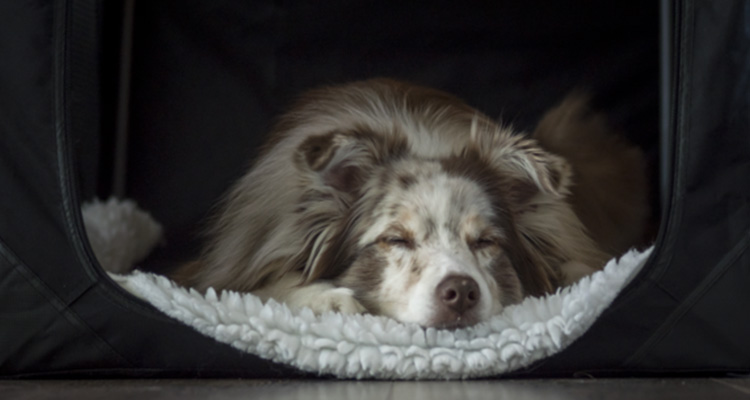
For training purposes, especially when teaching a dog to ride in a car, it can be beneficial to first acclimate the dog to a crate and then integrate it as a secure space in the car. Transport boxes provide not only safety in the car but also a comfortable and secure retreat for the dog in the house. While on vacation, a dog crate can convey a sense of security in an unfamiliar environment, especially for anxious dogs.
Dogs taken to the workplace can also benefit from a crate. However, it’s crucial not to view a dog crate as a kennel or, worse, as a prison to confine the dog simply for the owner’s peace. Instead, it should be used as a retreat or for secure transportation in the car.
Unlike a dog bed, a crate is fully enclosed, minimizing environmental stimuli. Many dogs find this helpful in relaxing more quickly. Another advantage of the crate is that it discourages others, such as colleagues or family members (e.g., children), from trying to pet the dog. The crate is generally better understood as a retreat, and it’s more cumbersome to pet a dog in a crate.
In the house, position the dog crate so that it’s not directly in a high-traffic area, but not completely isolated either. Ideally, the dog should be able to observe daily activities from its crate. In the car, a dog crate can have a calming effect, especially if it has already been associated with relaxation and has a sight barrier that minimizes environmental stimuli.
When setting up the crate, consider maintaining the dog’s floor preference. Many dogs prefer soft surfaces, so placing blankets or cushions inside the crate is often preferred. However, some dogs like resting on a hard surface and may avoid soft bedding. In such cases, accommodate the dog’s individual preferences. During the warmer months, provide various floor textures inside the crate, such as warm and soft, cool and hard, to allow the dog to regulate its body temperature.
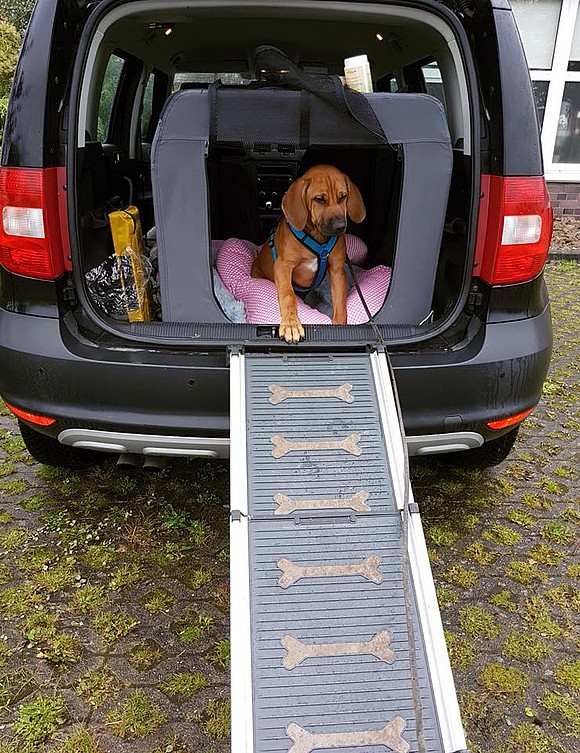
When Can A Dog Be Placed In A Closed Dog Box?
Appropriateness primarily means behaviorally appropriate. The accommodation must enable the animal to engage in its fundamental and species-appropriate behavioral needs.
Examples where housing in a box is considered proportionate include transport or protecting the dog after surgery. According to Animal Welfare Dog Ordinance, the housing of the dog in crates is permitted only for temporary housing and must only last as long as the justifying reason exists. The duration of housing is not fixed in time, depending on the individual case and circumstances. If you use the box for the safe transport of the dog and/or offer it as a retreat in the home, where the dog can enter and leave the box at any time, you are legally on the safe side.
In my opinion, it’s acceptable to close the box for a shorter period if the dog feels comfortable in it at all times. For instance, at the workplace or when taking the dog to a seminar. I consider locking a dog in a box for several hours relevant to animal welfare, especially if no prior crate training has taken place. While the box is closed, the dog should always have access to fresh water (there are bowls that can be attached to the bars, for example).
Cleaning
To clean dog transport boxes, you can use a vacuum cleaner to remove accumulated hair and coarse dirt. Subsequently, wipe the inside of the box with lukewarm water and a mild cleaning agent. To prevent rust or unpleasant odors, thoroughly dry the box or let it air dry.
For smaller plastic boxes (kennels), avoid using a vacuum cleaner, as the material can quickly deteriorate, and suction can cause cracks. Instead, mix some dish soap with water and wipe the box, both inside and outside.
If the dog crate is used frequently or integrated into the dog’s daily life in the living area, it is advisable to clean the box once a week and as needed. With most plastic boxes, the upper half can be removed, making cleaning easier and taking up less space when storing.
The Right Size
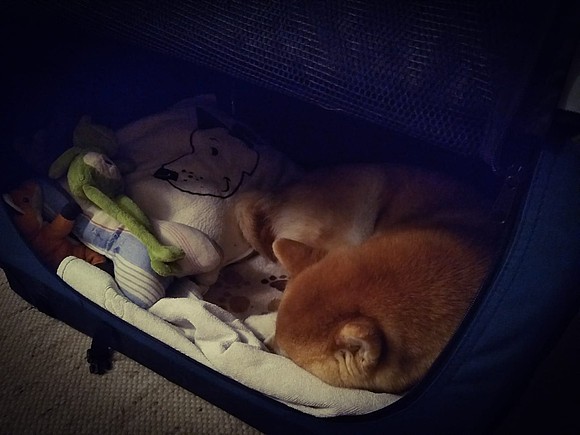
The dog crate should be large enough for the dog to stand upright, turn around without difficulty, and lie down comfortably. To determine the individual size of a dog crate for your dog, measure the standing dog to the tip of the ears and add approximately 5 cm to determine the height.
The width of the dog crate should be at least twice as wide as the dog. The optimal length of the box can be measured by adding half the leg length and the total length of the dog.
Habituation
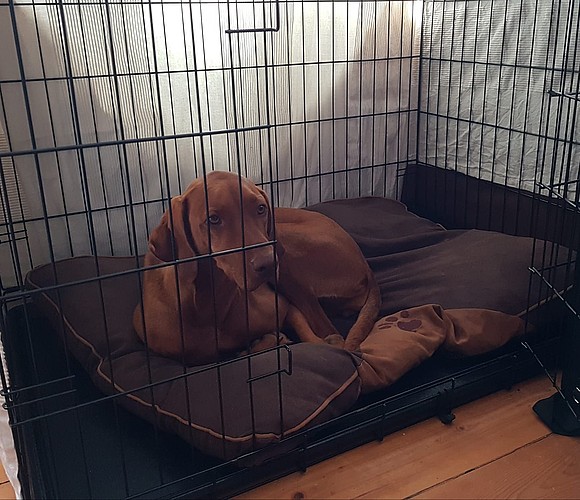
To accustom the dog to a crate, you can initially place it in the home. This allows the dog to see it and perceive it as harmless. After a few days, you can start the actual training.
Many dogs enter the box after a few training sessions, while others, especially those with previous negative experiences, may take considerably longer. If the box has a removable lid, you can start by practicing with just the bottom. Positive reinforcement can be used for the initial approach to the box, with the dog receiving a marker signal (marker word/click from the clicker) and a treat (or another suitable reinforcement) for the approach. Step by step, you can increase the requirements until the dog is fully inside the box.
If you want the dog to lie down in the box, you can give the signal to lie down as soon as the dog is in the box. Once the dog understands the exercise, possibly going into the box on its own after receiving the signal for “down,” you can introduce a signal, such as the word “box.” Now you can slowly increase the duration the dog should stay in the box and reward it for longer stays in the closed box. Once the dog can lie in the box for a longer period, you can gently close it and reward the dog for lying calmly in the closed box.
It is crucial not to proceed too quickly. The dog should feel comfortable at every training step and not become stressed, which can be recognized by its body language. The duration of the closed box must be increased very gradually; otherwise, the dog may develop fears, jeopardizing the success of the training. This type of habituation training can vary from dog to dog. It’s best to contact an experienced, force-free dog trainer who can support you in training.
Only One Dog Per Dog Box
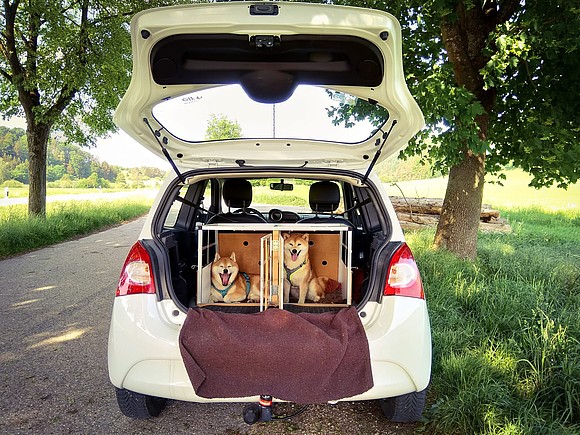
If you plan to travel with multiple dogs, it is essential not to transport more than one dog in a single transport box. Even if the dogs have known each other for a long time, transporting multiple dogs in one box poses significant risks.
Firstly, the excitement level of the dogs is often heightened due to the journey, and there is limited space, making it impossible for the dogs to avoid each other. Another issue could arise if a dog “slips” onto another during a turn, potentially leading to aggressive behavior due to the already increased state of excitement.
Puppies
If you’ve decided to welcome a puppy, it’s a good idea to integrate a box or kennel into daily life from the beginning. The key is to ensure that the dog has only positive experiences in its retreat. Since a puppy needs much more sleep than an adult dog, the box can help them find rest.
Rescue Dogs
For dogs from rescue organizations, especially those from abroad, it’s important to consider that they may have had less pleasant experiences with staying in boxes. Think, for instance, of the several-hour stay in the flight box. The adjustment to the box may take longer for rescue dogs, requiring more patience. It’s advisable to seek guidance from a competent dog trainer. The success lies in a sensitive training approach that addresses any existing fear of the box.
Multi-Dog Households
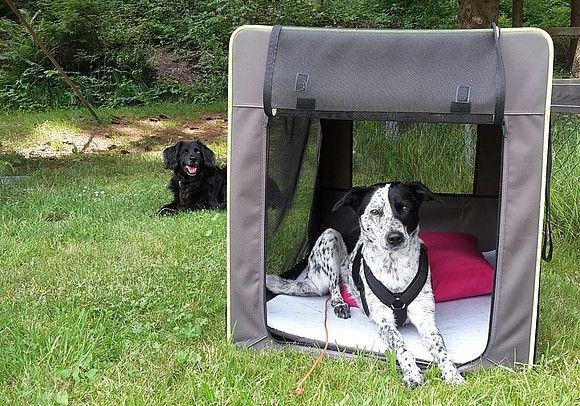
For households with multiple dogs, establishing a safety zone for each dog can be beneficial. Boxes and kennels can be a sensible option for this purpose. Especially when there are tensions or aggressive behavior within the dog group, spatial separation can be useful. The more space available in the house or apartment, the easier it is to establish a safety zone for each dog.
Safety zones have also proven effective in visitor training, where dogs learn to go to their designated place when the doorbell rings and guests arrive. Once the dogs have learned this, one can calmly approach the door, let the visitor in, and avoid critical situations, such as multiple dogs wanting to greet the visitor in the hallway, leading to conflicts due to the confined space.
The Crate as a Retreat
If you want to create a retreat with a box/kennel for your dog, it’s crucial, especially for families with children, that the dog should not be disturbed while in the box. Ensure that all household members and visitors respect this retreat space at all times.
Conclusion
What I personally appreciate about dog boxes and kennels is how they can genuinely simplify life for both dogs and their owners. Once the box has become a place of relaxation and tranquility for the dog, it can serve this purpose in various locations. Whether in the car, at work, on vacation, at a seminar, or at home, with proper training, the box becomes a portable “island of calm,” reducing stress for the dog and providing security.
Caution: Every dog is an individual, and the training steps may vary for your dog. A knowledgeable dog trainer is happy to assist you.


